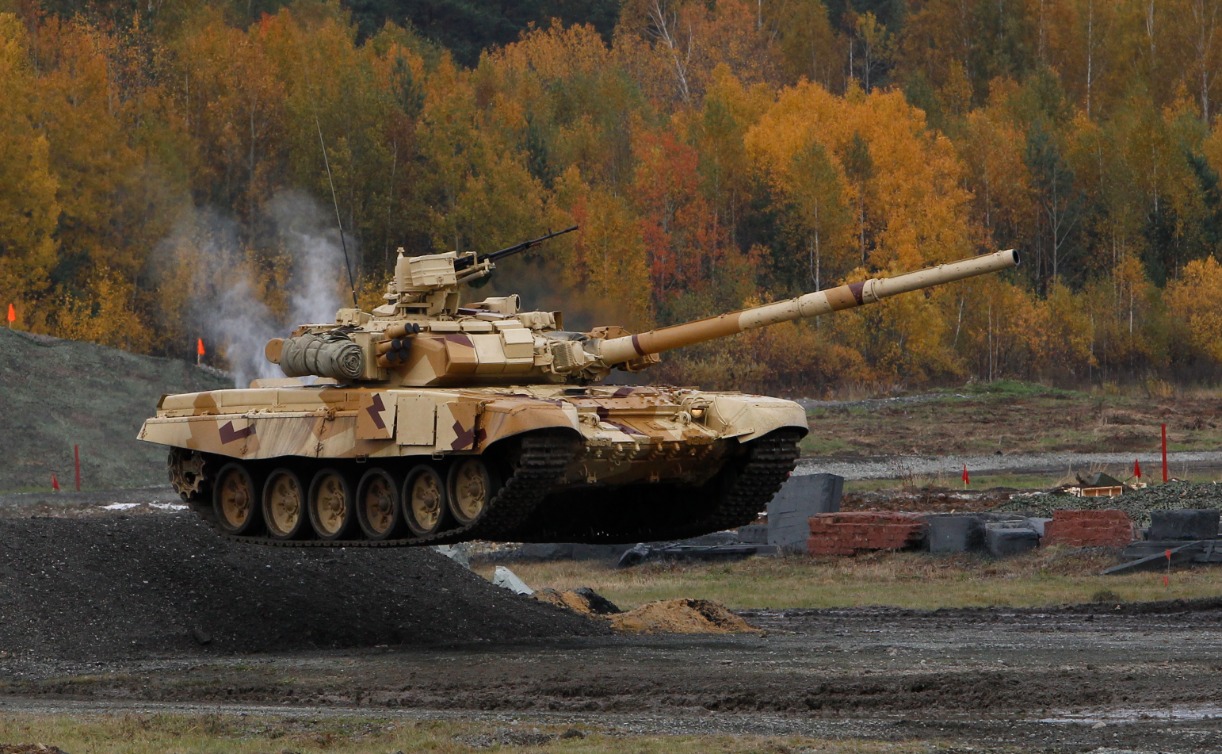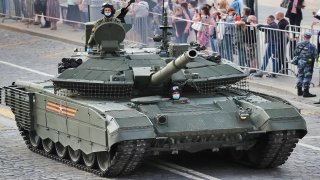Russia's T-90 Tank Keeps Getting 'Smashed to Pieces' in Ukraine War
The ongoing conflict between Russia and Ukraine has seen significant losses of tanks on both sides, with Russia particularly hard-hit. Estimates suggest Moscow has lost at least 2,000 tanks, including 145 of its most advanced T-90s. Ukrainian forces recently captured a T-90 and a BMP-2 infantry fighting vehicle from retreating Russian troops.
Summary and Key Points: The ongoing conflict between Russia and Ukraine has seen significant losses of tanks on both sides, with Russia particularly hard-hit. Estimates suggest Moscow has lost at least 2,000 tanks, including 145 of its most advanced T-90s. Ukrainian forces recently captured a T-90 and a BMP-2 infantry fighting vehicle from retreating Russian troops.

-Despite being designed to counter NATO's newer tanks, the T-90 has struggled in Ukraine, highlighting issues in Russian military strategy and technology.
-As Russia's tank numbers dwindle, Ukraine's defensive position strengthens, potentially shifting the balance in the ongoing war.
Russia's T-90 Tank Has a Problem
While both Russia and Ukraine have lost many tanks throughout their war, Russian forces have especially suffered. Open-source intelligence groups estimate Moscow has lost at least a couple thousand tanks over the last two and a half years, although it is difficult to verify exact numbers.
Ukrainian forces target every Russian tank series on the battlefield, and Russia’s ranks of T-90s have been decimated. Oryx estimates that Moscow has lost at least 145 T-90s, which are considered to be the most capable MBTs Russia fields.
Last week, Ukrainian soldiers from the 68th Jaeger Brigade reportedly captured a T-90 left behind by Russian troops on the battlefield. According to Defence Blog, Kyiv captured a T-90 tank and a BMP-2 infantry fighting vehicle.
This came one month after video footage showing the destruction of another T-90 circulated on social media. Clearly, the downward performance trajectory for Russia’s most modern tank does not bode well for the Kremlin’s offensive efforts.
Introducing the T-90 Platform
The T-90 was derived from a Soviet-era program to replace the T-64, T-72, and T-80 tanks. In order to better counter the newer tanks being deployed by NATO countries, Soviet engineers were tasked with innovating a whole new series. The resulting T-90 model may look similar to its predecessors, but the tank was designed with several upgrades that made it a superior platform for the Soviets.
The T-90M, nicknamed Proryv-3, is the latest variant in the T-90 series. Designed to be exported, this model improves the protection, mobility, and firepower over previous variants. The T-90M is equipped with a newer gun with superior range and can fire HE, HE-FRAG, or APFSDS rounds using 125 mm ammunition. In terms of countermeasures, the T-90M is fitted with a Shtora-1 suite that provides a laser warning system, automatic smoke dispensers, and infrared dazzlers.
The T-90 Has Not Fared Well in Ukraine
Despite the T-90’s capabilities, Russian forces have struggled to use these tanks properly in combat. Moscow does field an even newer MBT platform, the T-14 Armata. However, after a brief stint on the frontlines of the invasion, Moscow withdrew its limited Armata fleet from the battlefield.

As Russia’s tank arsenal continues to decline, Ukraine will be better positioned to achieve its defensive aims in the war.
About the Author: Defense Expert Maya Carlin
Maya Carlin, National Security Writer with The National Interest, is an analyst with the Center for Security Policy and a former Anna Sobol Levy Fellow at IDC Herzliya in Israel. She has by-lines in many publications, including The National Interest, Jerusalem Post, and Times of Israel. You can follow her on Twitter: @MayaCarlin.
All images are Creative Commons.


